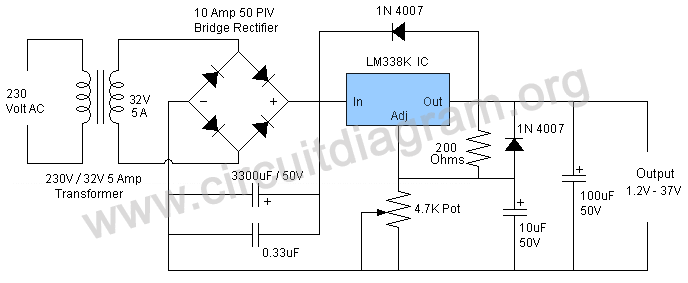The.Pisces
- Dec 19, 2015
- 5
- Joined
- Dec 19, 2015
- Messages
- 5
Why do we use bridge rectifiers with laminated core transformers? If the transformer steps down the voltage to 24v volts (in my case) why should i use a bridge rectifier if i am building a linear voltage regulated power supply.
Currently working on an LM338K linear power supply.
reference:
Another Question Where should I put the other potentiometer to Control the Current

Currently working on an LM338K linear power supply.
reference:
Another Question Where should I put the other potentiometer to Control the Current

Last edited:
